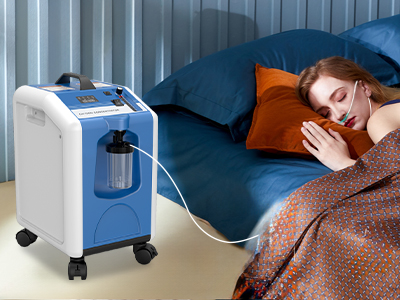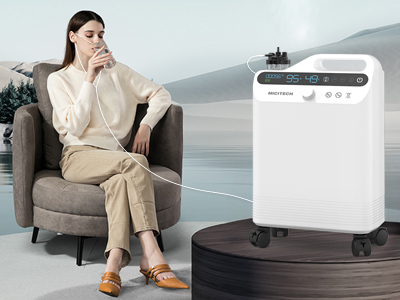12 Jan 2024
An oxygen concentrator is a medical device designed to deliver a concentrated flow of oxygen to individuals with respiratory conditions.

How Oxygen Concentrators Work
A. Molecular Sieve Technology
Oxygen concentrators employ molecular sieve technology, a process that separates nitrogen from ambient air, leaving a high concentration of oxygen for therapeutic use.
B. Flow Settings and Oxygen Purity
Adjustable flow settings allow users to control the rate of oxygen delivery, while oxygen purity levels indicate the concentration of oxygen in the delivered air.
Indications for Oxygen Therapy
A. Medical Conditions Requiring Oxygen
Conditions such as chronic obstructive pulmonary disease (COPD), pneumonia, and respiratory distress syndrome may necessitate oxygen therapy for improved respiratory function.
Oxygen Saturation Levels
Monitoring oxygen saturation levels with a pulse oximeter helps determine the need for supplemental oxygen, ensuring adequate oxygenation of the body.
Types of Oxygen Concentrators
A. Stationary vs. Portable
Stationary concentrators are suitable for home use, providing a continuous flow of oxygen, while portable models offer mobility and flexibility for individuals on the move.
B. Continuous vs. Pulse Flow
Continuous flow concentrators deliver a constant stream of oxygen, while pulse flow models release oxygen in pulses, adapting to the user's breathing patterns.

Choosing the Right Oxygen Concentrator
A. Consultation with Healthcare Professionals
Healthcare professionals play a crucial role in assessing individual needs and recommending the most appropriate type and model of oxygen concentrator.
B. Considering Lifestyle and Mobility
Factors like lifestyle, daily activities, and mobility requirements influence the choice between a stationary or portable oxygen concentrator.
Setting Up and Using an Oxygen Concentrator
A. Initial Installation
Setting up a new oxygen concentrator involves straightforward steps, including connecting tubing, plugging in the device, and adjusting flow settings.
B. Safety Measures
Ensuring safety during operation involves placing the concentrator in well-ventilated areas, avoiding blockages, and following device-specific guidelines.
Maintenance and Troubleshooting
A. Regular Cleaning and Filter Replacement
Regular maintenance, including cleaning surfaces and replacing filters, is essential to uphold the efficiency and hygiene of the oxygen concentrator.
B.Common Issues and Solutions
Addressing common problems such as power issues, unusual sounds, or indicator alarms with troubleshooting measures ensures uninterrupted use.
Costs and Insurance
A. Initial Investment vs. Long-term Costs
Understanding the upfront costs and long-term expenses associated with owning an oxygen concentrator aids in financial planning.
B. Insurance Coverage
Exploring potential insurance coverage options or reimbursement programs helps alleviate financial burdens related to oxygen therapy.
This comprehensive guide equips individuals with the knowledge needed to make informed decisions about oxygen concentrators, from understanding their functioning to selecting the right device based on medical requirements and lifestyle considerations.
Keywords: oxygen concentrator
Originally published 12 Jan 2024, updated 12 Jan 2024.